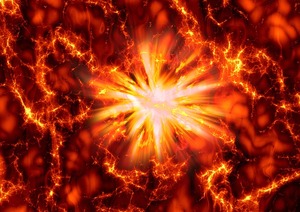Safety Assessment of CERNs LHC was not independent!
How the safety review of CERN's large hadron collider is not independent of CERN itself and how both the Swiss Federal Council and Control Committees either contradict or do not admit this fact
Open letter by Heavy Ion Alert - an international group concerned with the safety review process of CERNs Large Hadron Collider and with the possible production of dangerous 'strangelets' there.
Within weeks collisions at Geneva based CERN's Large Hadron Collider will reach nearly double the highest yet reached energy between pairs of nucleons for any such experiment. But in an open letter now publicly available, international campaign group 'Heavy Ion Alert' makes known that the Swiss Federal Council and Swiss Control Committees have failed to acknowledge the lack of independence of the official 2008 safety review for the Large Hadron Collider. Heavy Ion Alert also explains that arguments used in the safety review are at odds with statements of CERN's own LHC researchers. It further outlines the lack of proper regulation of unprecedented experiments and urges for the establishment of an independent multidisciplinary safety review for the LHC.
To explain the background to this letter, in 2008 the Swiss Federal Council gave assurances to members of the Swiss Federal Assembly that the official safety review (LSAG report) for the Large Hadron Collider was composed of Cern-unabhängigen Experten' (experts independent from CERN). In reply to a 2011 supervisory request from Heavy Ion Alert, the Control Committees did not acknowledge any error in this Swiss Federal Council assurance. Neither did they acknowledge a further safety regulation related concern that Heavy Ion Alert had raised with them: that various assurances given in the - not since updated - LSAG report contradict documented statements by CERN's own LHC research scientists.
The open letter provides evidence that the Federal Council's statements of independence from CERN concerning the official safety review process are false. In the letter, Heavy Ion Alert explains the above-mentioned contradictions that relate to the production and attributes of a possibly disastrous sort of extreme materia known as 'strangelet'. One example is the contradiction between the LSAG report's statement of:
'. . . impossibility to produce strangelets at the LHC . . .' (LSAG Report, p.13, end of 1st paragraph)
and that of experimental researcher with CERN, Panos Katsas (University of Athens), who states:
'my main area of interest is the study of exotic events in heavy ion collisions, especially the identification of strangelets, which are likely to be produced' (CMS times, Dec 3 2007, 3rd paragraph).
This statement of Katsas relates to the incorporation of a detector subsystem called CASTOR within the LHC, and which is in fact designed also for the detection of strangelets.
For more information about Heavy Ion Alert see www.heavyionalert.org
See the open letter to the Control Committees of the Federal Assembly here: http://www.heavyionalert.org/corresp/gpk/openletterresponse(en)
Full correspondence (including outline): http://www.heavyionalert.org/corresp/gpk/gpkcorresp(en)
Heavy Ion Alert report outlining the contradictions between LSAG review reassurances and statements of CERN scientists: www.heavyionalert.org/docs/CERNContradictions.pdf
Contact: Eric Penrose:
Artikel Online geschaltet von: / stevanov /
